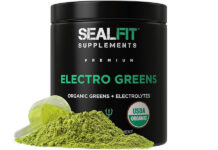
Exercise Daily – Wondering about sport participation for youth peaks at what age? If so, then find out everything about it here.
The findings of a study conducted by Sheffield Hallam University revealed that students from lower socioeconomic groups (SEG) are less likely to participate in sport or physical activity while at university.
Participants reported that the most significant barriers to participation were related to the cost of being a member of a sports team, a lack of time due to academic obligations, part-time work, or their social lives taking precedence, as well as limited background knowledge of and participation in sport prior to starting university, among other factors.
Sport Participation for Youth Peaks at What Age? – Research

Researchers from British Universities and Colleges Sport conducted a survey of over 700 students from 20 universities, which was published in the peer-reviewed Sport, Education, and Society journal.
The findings revealed that students who had taken part in physical activity and sport prior to commencing university were more willing to keep participating while at university, regardless of socioeconomic status.
New university students were less likely than their older counterparts to participate in a sport that they had never done before, and their confidence to undertake new activities decreased as they became older.
The availability of facilities and accessibility, as well as whether or not students lived on or near campus or commuted to university, were other university-specific factors that influenced involvement.
There was a high percentage of commuting students in the low SEG category, and it was discovered that they were less likely to participate in university sports groups and to use university facilities, but they were more likely to continue any current engagement at home.
Dr. Kerry Griffiths Thoughts on Sport Participation for Youth Peaks at What Age?
The Sports Industry Research Centre at Sheffield Hallam University’s Dr. Kerry Griffiths shared his thoughts on the subject that when young people reach university age, evidence suggests that participation in sport and physical activity decreases.
It follows that universities must take the lead in sustaining existing participation as well as enticing and sustaining participation among potential new participants.
As previously said, there is evidence to suggest that persons from lower socio-economic categories are less likely to participate in sport and physical exercise at any age.
Colleges and universities may expand on current outreach programs with schools or local communities to investigate how they might be able to assist in the development of sports habits at an earlier age.
Additionally, for individuals who already participate in sports at the collegiate level, it is necessary to ensure that they have the appropriate opportunity, support, and motivation to be able to continue to do so.
Exploring or building relationships with local community organizations may also be a valuable technique for ensuring that existing participants’ engagement is continued in the long run.
The findings of a study conducted by Sheffield Hallam University revealed that students from lower socioeconomic groups (SEG) are less likely to participate in sport or physical activity while at university.
Source: https://www.tandfonline.com/doi/full/10.1080/13573322.2020.1837766
Benefits of Youth Sports Participation

Since we know that sport participation for youth peaks at what age? Let’s have a look at what can be the benefits of youth sports participation.
Any extracurricular activity might require a significant time commitment from parents. Youth sports are no exception to this rule. Parents are frequently pushed to juggle their schedules in order to get their children to practices and games.
Despite the fact that some may find kids’ sports to be excessively rigorous and competitive, the majority of families understand the numerous benefits of participating in youth sports. And as a result, they are more prepared to tolerate any short-term difficulties.
An investigation conducted recently discovered that 76 percent of parents encourage their children to participate in middle and high school athletics.
The majority of the athletes who compete on these school-based teams began their athletic careers in youth leagues.
Clearly, the majority of parents believe that kid sports activities are beneficial. Here are the top five reasons why you should consider enrolling your kid in a sports team.
Increased Physical Fitness and Health

Young people nowadays are faced with a slew of incentives to live a sedentary lifestyle. And unfortunately, far too many people fall into this trap.
The usage of technology by children is increasing, but the amount of time spent outdoors is decreasing. Only one in every three youngsters engages in regular physical exercise on a daily basis.
How can you prevent your children from slipping into a state of boredom? and sport participation for youth peaks at what age?
Enrolling your children in a youth sports program can assist them in developing excellent health habits as they grow older. Even a single day of regular exercise each week might be quite beneficial.
Kids who participate in sports had lower body fat percentages, stronger muscles and bones, and improved cardiovascular fitness than their peers.
They have a far reduced chance of being overweight or obese than the general population. Additionally, they can provide the groundwork for a healthy lifestyle.
One of the most significant benefits of youth sports involvement is the improvement of health outcomes.
Forming Social and Community Ties

For many children, participating in sports is an excellent opportunity to meet new people. Participating on a team can provide your children with an opportunity to meet new people from their neighborhood, school, and the surrounding region.
Frequently, these friendships continue long after the season has ended. Kids might reminisce about good moments they had together and about common interests.
Additionally, participating in a local league helps to foster a deeper sense of belonging to the community.
Young people will have the opportunity to interact with adults who volunteer as coaches or league officials. They can establish friendships with these trustworthy adults, who can serve as crucial role models for them.
Additionally, your children will be able to experience firsthand the importance of volunteerism. They are capable of comprehending what it takes to be a constructive contribution to the community.
Improve their Academic Potential

Many young individuals who participate in athletics have a positive self-image and are extremely goal-oriented. These excellent characteristics have the potential to transfer to the classroom.
Sport participation for youth peaks at what age?
In reality, numerous studies have discovered a relationship between participation in juvenile sports and academic achievement. According to one research, a high percentage of athletes reported earning an “A” grade point average in their academic pursuits.
Student-athletes were significantly more likely than the general population to have high educational and professional aspirations. The majority of students want to graduate from a four-year college as well as a graduate or professional school.
Learn How to Deal With and Overcome Difficulties

The advantages of young sports involvement extend well beyond the confines of the field, court, or arena.
When your children participate in sports, they can learn to make rapid judgments. These excellent characteristics will benefit them well in their future professional endeavors.
Young athletes may experience feelings of unease when their teammates are reliant on them. Furthermore, it is unavoidable to experience the disappointment of at least one painful loss.
Despite this, the majority of young athletes are aware that they have the full support of their coaches and parents.
They come to realize that they have the ability to overcome hardship. Tough experiences in athletics can help young people develop resilience.
Since we know about sport participation for youth peaks at what age? Let’s take a look at health developments.
Facilitate the Development of Lifelong Health

Participating in sports can assist young people in developing healthy habits, according to the American Heart Association.
Sometimes, young children will explore a variety of sports before settling on one or a few as they become older. Those who continue to participate in sports understand that consistent practice may aid them in developing new abilities.
Additionally, more intensive training might result in increased levels of performance. This desire to enhance one’s self-improvement frequently remains even after one’s engagement in organized sports has ended.
Researchers have shown that young athletes develop into physically active adults as they grow older.
According to one long-term research, people who participated in sports between the ages of nine and 18 were five to six times more likely to remain active into adulthood than those who did not participate.
In some cases, participation in youth sports merely once a week resulted in a significantly increased likelihood of being physically active as an adult.
With no doubt, engaging in regular physical exercise from a young age may contribute to healthy adulthood.




